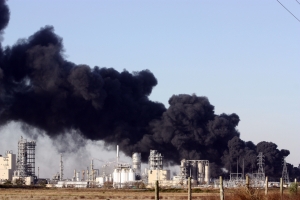Roughly 150 workers have been killed, and nearly 1,000 injured, in combustible dust explosions since 1980, according to the Occupational Safety and Health Administration (OSHA). In attempt to better understand combustible dust explosions and to find ways to prevent such incidents OSHA invited outside experts to participate in a Combustible Dust Expert Forum later this month. OSHA is looking to gather experts’ views and perspectives on possible regulatory options for addressing the safety issues of combustible dust hazards.
The Combustible Dust Expert Forum will include discussions targeting regulatory options that can help to minimize the costs to small- and medium-sized businesses of reducing or preventing combustible dust hazards. Representatives from various industries, academia, research groups, insurance-underwriter organizations, labor, and government will comprise expert representation at the Forum.

Our Boston workers’ compensation attorneys understand the importance of identifying the cause of these problems in effort to determine safe solutions to help protect workers. All safety measures should be taken by employers and employees to help keep the workplace safe for all.
The National Emphasis Program in 2007 was one of OSHA’s earlier efforts to address various combustible dust hazards. They conducted various targeted inspections that took a look at various workplaces that created or handled combustible dust. Results from these inspections illustrated that facilities had an alarmingly high number of general duty clause violations. These findings indicated a strong need for to create a combustible dust standard. This resulted in the publication of an Advance Notice of Proposed Rulemaking in 2009. With even more efforts, OSHA conducted six stakeholders meetings and a Web chat to discuss combustible dust in attempt to expand the opportunity for public and stakeholder participation.
Combustible materials, and sometimes even materials that are normally considered noncombustible, can burn rapidly when they’re in a finely divided form. If these types of dusts are suspended in air in the right concentration, the result can be an explosion. The force from these explosions can lead to worker deaths, injuries, and even the destruction of entire buildings.
Combustible dusts can include:
-Various fine particles.
-Chips.
-Fibers.
-Chunks or flakes that can potentially cause implosion of fire when suspended in air.
These various forms of combustible dusts can be made of metal, plastic, wood, sugar, flour, coal, rubber or paper. OSHA’s Safety and Health Topics page on combustible dust offers more details information about this dangerous hazard.
The Combustible Dust Expert Forum will be May 13, 2010 at the Department of Labor, 200 Constitution Ave., N.W., Washington, D.C. at 9 p.m.
If you have been injured at work in the Boston area, contact Massachusetts Workers’ Compensation Attorney Jeffrey S. Glassman for a free and confidential appointment to discuss your rights. Call (617) 777-7777.
More Blog Entries:
Freak explosion causes Massachusetts trucking accident, Boston Personal Injury Attorney Blog, June 13, 2010
Four Workers Injured in Middleton Chemical Plant Explosion, Boston Personal Injury Attorney Blog, March 27, 2011
Massachusetts structure fires up 3 percent in 2009, igniting issues of premises liability, Boston Personal Injury Attorney Blog, January 27, 2011
 Boston Personal Injury Attorney Blog
Boston Personal Injury Attorney Blog

